Students Need Our Help Detecting Fake News
We highly recommend that teachers explore a New York Times Learning Network article (1/19/17) sharing many lesson ideas and resources (including this post): Evaluating Sources in a ‘Post-Truth’ World: Ideas for Teaching and Learning About Fake News.
Also see this MindShift story (2/16/17) highlighting some ways that teachers across the USA are helping students close-read news/information for accuracy.
“Dewey Defeats Truman” read the large-type headline on the front page of The Chicago Daily Tribune for the issue published the night of the 1948 presidential election. The headline was wrong: Harry Truman HAD won.
The paper went to press before the final votes were counted. Truman, on a whistle-stop train tour, famously held up the erroneous headline, with a big smile on his face.
That famous incident was not fake news. But today, media consumers are being exposed to deliberately manipulated headlines in the news – via email and social media such as Facebook and Twitter. Even traditional “legitimate” media have gotten into the act.
GOP nominee Donald Trump was fond of repeating his plan to deport illegal immigrants, and the Boston Globe newspaper (a decidedly anti-Trump paper) decided to show readers what a future Trump presidency might mean. It created this fake headline along with other fake stories. This is what readers were exposed to:
A tweet from the Globe called it “the front page we hope we never have to print.” If you didn’t know the context, you might be fooled.
And lots of us are fooled, including our students, because we don’t stop and question the source of the information. All too often we’re anxious to forward “news” and click before making sure that the news isn’t wrong or deceptive.
President Obama speaking November 17, 2016 in Germany:
“If we are not serious about facts and what’s true and what’s not, and particularly in an age of social media when so many people are getting their information in sound bites and off their phones, if we can’t discriminate between serious arguments and propaganda, then we have problems.”
Fake news is now a “front-burner” issue
The fake news phenomenon has come to the forefront in recent weeks, amid all the upheaval around the U.S. presidential election, including:
► A BuzzFeed report that fake political news often dominated real news in social media (and counter-stories about the accuracy of BuzzFeed’s claim).
► Revelations that fake news creators in foreign countries, including the Russian government, aimed their internet messaging at U.S. voters.
► A confession by a fake-news producer that he believes he may have unintentionally swayed the election.
Both Google and Facebook have announced plans to crack down on the sources of this fake news, although others have raised questions about whether the problem is fixable or whether the plans of social media companies might violate the First Amendment.
Click bait is a phrase now being used for news stories that are designed to get you to read them, even though they may be outrageous in their claims. As a Los Angeles Times editorial noted: “The sites…were circulating stories that they knew weren’t true, at times aided by bots that created huge fake audiences on social media.”
While some fake news purveyors may have a political purpose, most often the goal is to deliver you (and, by implication, your students) to their advertisers. In this case, political damage is collateral damage.
Strategies to combat fake news
If I were addressing this problem in a 21st century classroom, I think I would start by asking students: what is news and who delivers it? Can your students distinguish between purposeful, legitimate news and the other stuff out there? This seems a good place to start.
Even authentic news outlets can cloud the distinctions. Fox News has two very popular anchors, Sean Hannity and Bill O’Reilly, but neither of their nightly programs should be confused with the other newscasters on the cable network. Some primetime MSNBC hosts might be considered in a similar light. So if they aren’t newscasters, how should they be labeled?
Media literacy, which has been around for a long time, encourages us to question what we see, read and hear. It’s been my experience that not many educators received any media literacy training in their colleges of education and so teaching students to question the news is, unfortunately, not a priority. But it should be. And it can be.
Media literacy educators and organizations have created a list of critical thinking questions that every teacher should consider using. Some of those questions include:
– Who created the message? (author, producer)
– Who is the message intended for? (audience, demographic)
– What techniques does the producer use to make the message credible or believable?
– What details might be omitted and why?
– Where can I go to locate more accurate information?
There are many other questions to be considered. Organizations such as the Center for Media Literacy, The News Literacy Project, and the National Association of Media Literacy Education can provide guidance and more recommendations. Another helpful resource is this Stanford study: Evaluating Information: The Cornerstone of Civic Online Reasoning.
WEB EVENT
March 16, 2017
Information Literacy in the Age of Fake News
Frank Baker, Gary Price (Editor of Infodocket) and Mike Ribble (Educator and Founder of digitalcitizenship.org) will participate in a free March 16 webcast moderated by Kathy Ishizuka, Executive Editor, School Library Journal. The 3-4 pm ET event is being presented by ISTE and School Library Journal. Register now and view March 16 or later.
Some specific ideas to consider
In Five Things To Do To Avoid Posting Fake News on Social Media, Luvvie Ajayi offers this timely advice, which includes some important “media literacy” type questions:
– Does this (posting) seem believable on a basic level?
– Is the website (which has posted it) reputable?
– Is this news reported elsewhere?
And the advice offered is:
1. Click (the link) and read beyond the headline.
2. Look at the date.
3. Google it.
4. Look it up on Snopes (a website that debunks fake news).
5. Know your satirical websites.
I’d add another one here: students who receive these fake news posts should challenge the sender of the message. I think we need to make those “media illiterate” consumers more aware of their role in spreading untruths. Students can help. My goal here is not to shame someone, but rather open their eyes to how quickly “news” spreads virally online. We can coach students on the right ways to alert unintentional sharers of false or misleading information.
Post-truth is defined as a state in which “objective facts are less influential in shaping public opinion than appeals to emotion and personal belief.” – Salon
Use fact checking resources
If you and your students doubt what you’re reading is legitimate, there are now some excellent go-to websites that are reliable and trust-worthy. So called fact-checking websites were very busy during the election season, investigating claims by candidates during their speeches, interviews and advertising.
You might wish to bookmark or save FactCheck.org, a project of the Annenberg Public Policy Center, and the Washington Post Fact Checker which recently published Fact checking in the aftermath of a historic election outlining what is known about the effects of fact checking on elections. Another option is Politifact.com from the Tampa Bay Times.
More help:
► An article at the CNN website, “Here’s how to outsmart fake news in your Facebook feed,” uses 10 examples from recent fake news outlets to walk readers through what they tag a “New Media Literacy Guide.”
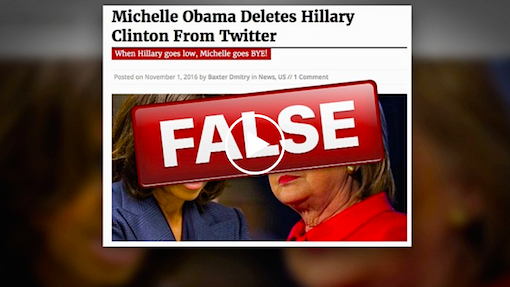
CNN also includes tips from Alexios Mantzarlis, the head of the International Fact-Checking Network at the Poynter Institute.
► Teaching Teens Media Literacy 101 by Karen Jensen in School Library Journal.
► A guide to spotting fake news by Rachel Uda in Newsday.
► How to Spot Fake News – a detailed discussion from FactCheck.org
► 3 Tips for Teachers to Help Teens Distinguish Fact from Fiction. Alexandra Pannoni, US News.
__________________________________________
Read more Frank Baker articles
at MiddleWeb about Media Literacy.
Read articles about social studies and media literacy
at our Future of History blog, including
“Teaching History Students to Recognize Bias” and
“After the Election: What’s Next in History Class?”
_________________________________________
Deciphering what’s true or not is harder than ever
With social media’s popularity as a news source, it’s more important than ever that we equip students with the media literacy/critical thinking skills to distinguish fact from fiction. Admittedly, it’s a challenging task. But our civil society depends on a well-informed citizenry – including tomorrow’s voters.
Update (11/2016): In a just released study Stanford Graduate School of Education professor Sam Wineburg found that “82 percent of middle school students could not distinguish between a native ad sponsored content and a real news story.” Wineburg’s colleagues will develop materials for educators to help students use digital information. Hear Wineburg in this NPR interview.
Update (11/2016): The Oxford English Dictionary selects POST-TRUTH as the 2016 Word of the Year, defining it as “‘relating to or denoting circumstances in which objective facts are less influential in shaping public opinion than appeals to emotion and personal belief.”
Update (12/2016): The Cynical Gambit to Make ‘Fake News’ Meaningless. The Atlantic reports on the debate over defining “fake news” and attempts by fake-news producers to muddy the waters.
Update (12/2016): A Finder’s Guide To Facts NPR’s Steve Inskeep outlines questions to ask to determine if a news story is fake.
Update (01/2017): Researchers Created Fake News Two economists (NYU and Stanford) jointly surveyed a sample of Americans to measure effect of fake and “fake fake” news. Article in NYT describing the study concludes: “People’s hunger for information that suits their prejudices is powerful, and in the digital media age, a pile of it emerges to satisfy that demand.”
Update (02/2017): Sherri Hope Culver, Director of the Center for Media and Information Literacy at Temple University, examines the varieties of ‘fake news’ and suggests tactics for dealing with it in her February blog post.
Update (03/2017): Veteran school media specialist Paula Deal offers an excellent article at the Teachers First blog: Reliable Sources and C.R.A.A.P.
Update (02/2019): “Why Fears of Fake News Are Over-hyped.” University of Michigan public policy professor Brendan Nyhan offers a fresh look at the data, three years later.
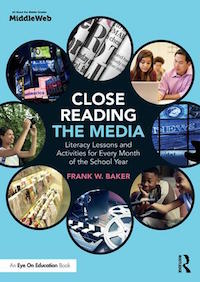


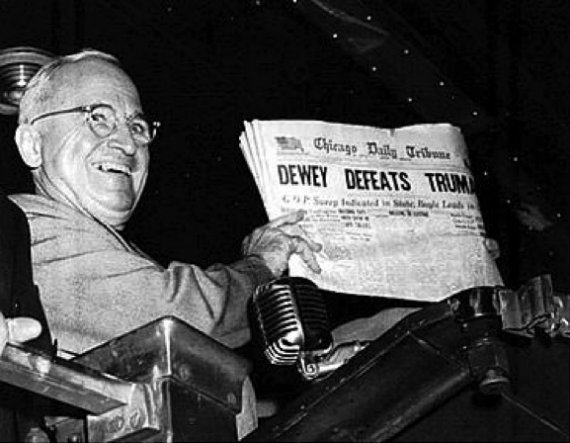
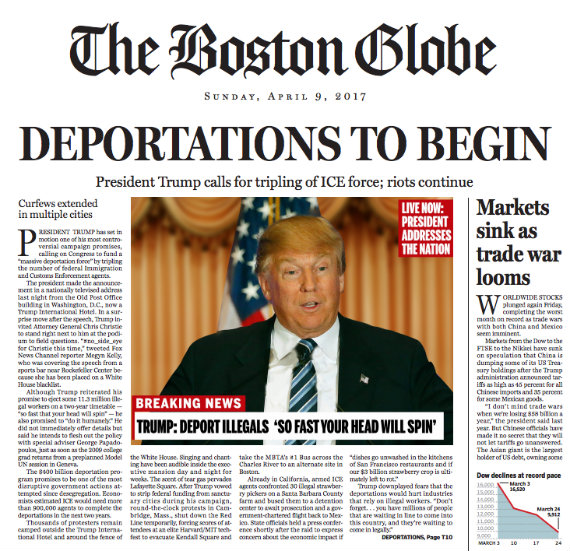
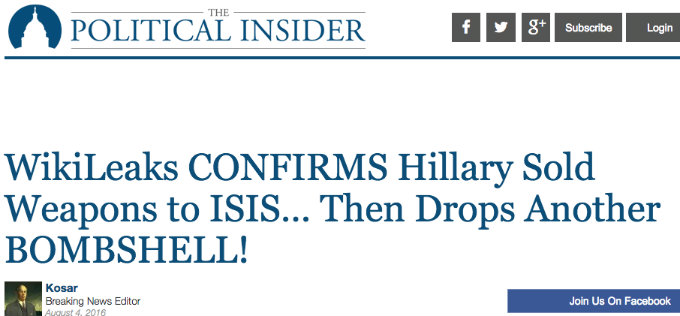



































Every site is biased and could be considered ‘fake’ by those who don’t believe in that particular position. The only thing that possibly isn’t biased are lists of dates, but even those included and excluded and the order and presentation could be bias. The skill comes in acknowledging the bias and figuring out what the facts are within the story.
On cable news, CNN allegedly tries to stick to the middle, MSNBC is left, and Fox is right. There are slight variations based on different shows, but that appears to be the general positions. Shows like Bill O’Reilly and Sean Hannity on Fox do not claim to be straight news, but news commentary. Fox frequently states which of their shows are commentary versus news.
Sites listed as Fact Checker sites are also biased, everything is. How the question is worded and thereafter answered shows this. Snopes, Factcheck.org, Politifact, and Washington Post Fact Checker are left. They are fine to use, but they have that bent and must also be viewed with that in mind.
The best bet is to try to get as close to a primary source as possible, understand everyone’s implicit bias, and judge what happened to the best of your ability. Sometimes ‘fake news’ has a kernel of truth embedded in it or seems like something that could have happened based on past information on the subject. That’s what makes it easy for so many people to fall for it.
A good source to utilize to help students find the truth is the media specialist/school librarian. As one, this is a primary part of the curriculum taught (it’s supposed to be anyway). I know I taught at least one unit per month with every grade on this topic alone. It’s funny to me that ‘fake news’ has become such a topic because of this election. False information has been utilized in politics since the Roman Empire and before. It’s not new at all.
There are differences among bias, propaganda and fake news. The article is not talking about how to teach our students to recognize bias but how to recognize actual made up stories, Photoshopped pictures, etc. Click bait seems to be an example of yellow journalism and sensationalism, but fake news is different. These stories and pictures are fabricated, not one sided or just blown out of proportion. It is a more important topic now because of the rise of social media. “Social” sites are now where young people and adults are getting what they believe is “news.”
I am sorry to say that I have found many media specialists understand neither media literacy, nor bias, or how to teach it effectively. One of the problems (among many) is that the colleges of library and information sciences are NOT teaching media literacy, so educators are graduating without education or experience in this area. They could do better in this regard.
http://www.thenewsliteracyproject.org/
great source for this.
Thanks Sherry, NLP was referenced in my article above. It’s a good site.
Our fake news onslaught is the culmination of 30 years of domestic propaganda, begun when the Fairness Doctrine was struck down by Reagan and then worsened when Clinton allowed massive media consolidation and deregulation. Next, we saw the rise of the extreme right wing shock jock Rush Limbaugh, Hannity and local clones in every market, dominating talk radio, while the network media devolved into a corporate loudspeaker, changing the role of its “news” divisions to cater to commercial sponsors, Wall Street and political allies.
We stood by and let this happen, let our kids be raised in an era of propaganda, knowing well the perils of manipulated, fake news from the post WWII era to McCarthyism, Vietnam and the so-called War on Terror. We all know that ABC, CBS, CNN, NBC, MSNBC and every other channel have been scrubbing the real news, ignoring the public interest on the biggest stories of our time.